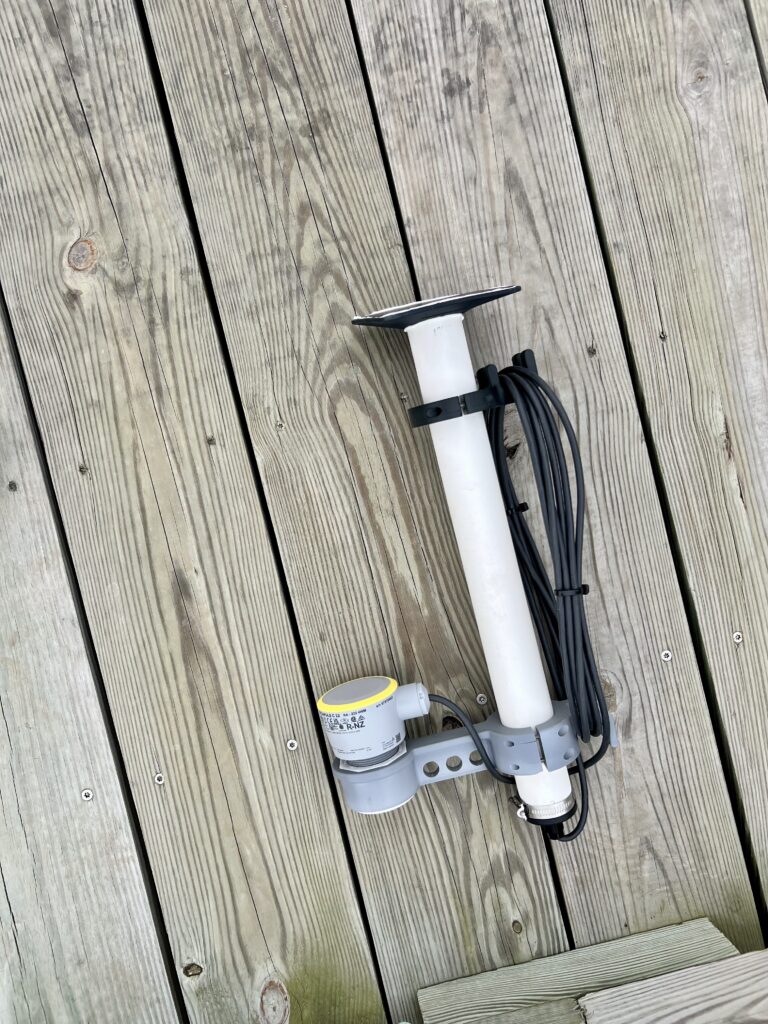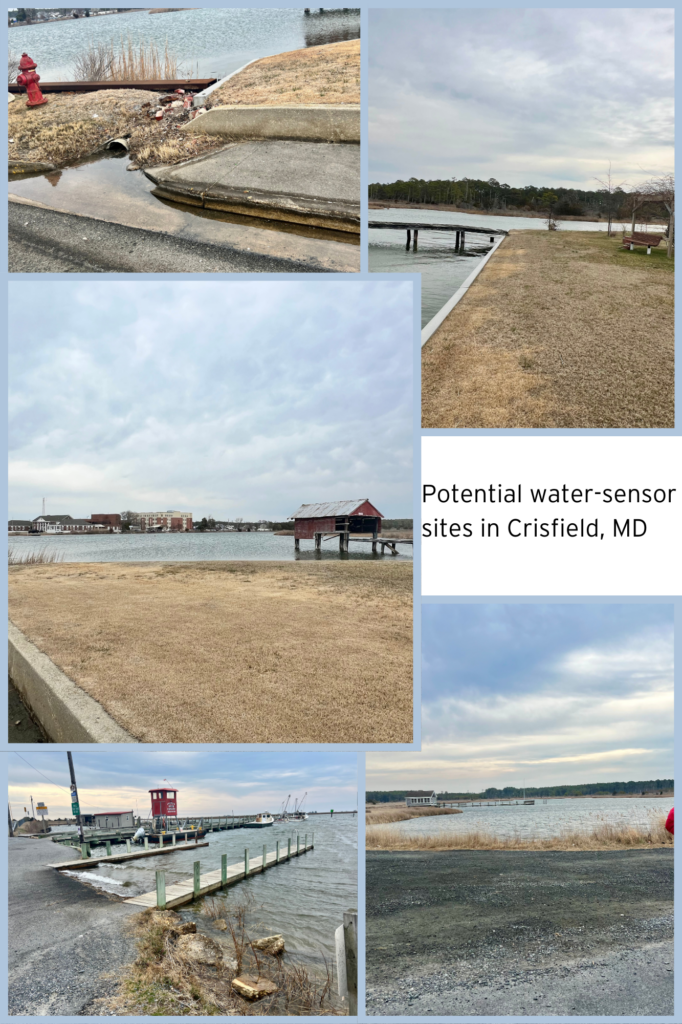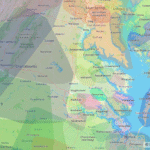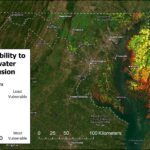The Climate Resilience Network was invited to visit Crisfield, Maryland at the end of February 2025. Crisfield is a small city on the southern tip of the Delmarva Peninsula on the Tangier Sound. Mike Maddox, Dr. Tim Canty, Dr. James Hyde, and I stopped to meet the students and teachers at It Takes A Village To Help Our Children (ITV2HOC) before attending Crisfield’s City Council meeting on February 26, where Dr. Canty and Dr. Hyde proposed the installation of several water level sensors in the city to help them get ahead of the frequent flooding that impacts its citizens. We toured the area to identify potential sites to install the water level sensors the following day.

Hohonu water level sensor
But what are these water level sensors? Developed by Hohonu, they are relatively inexpensive devices that use sound waves to measure water height. It sends the height to a database every five minutes using 5G. CRN has already installed five sensors in Annapolis, Maryland, and plans to install more throughout the state to provide local governments, emergency management agencies, and citizens with accurate, timely data to become better prepared for flooding events.
About Crisfield
Crisfield, Maryland was incorporated and renamed from Somer’s Cove in 1872. It was known as “the seafood capital of the world” and was the largest oyster producer in the United States until the 1980s. Crisfield was once the second largest city in Maryland, with a population of 25,000 in 1904. However, the population has been on the decline; the population in 1990 was 2880 and dropped to 2475 in 2020, according to Census data. In the 19th century, Crisfield was the leading oyster producer in the US. The industry declined due to “overharvesting, mismanagement, and devastating diseases.”
Crisfield still has a strong seafood industry and popular seafood restaurants that tourists travel hundreds of miles to enjoy. Instead of oysters, today, their claim to fame is the Maryland blue crab. Crisfield is also revitalizing its tourism industry by implementing projects to repair the City Dock and revive its Main Street.

Mural on Main Street in Crisfield, MD.
Tour of the City
Crisfield is especially vulnerable to tidal flooding. The elevation is 3 feet or less above sea level, and it is surrounded by marshes. Rising sea levels, land subsidence, and unusual ocean currents along the east coast of the United States all contribute to frequent flooding in the city. This has a huge impact on the day-to-day operations of Crisfield, like making main roads impassable and cutting off access to the city’s health care complex, Tidal Health McCready Pavilion. The situation will turn around within the next few years; Crisfield will receive $36 million from FEMA’s Building Resilient Infrastructure and Communities program to provide up to 5 feet of flood protection in two phases, the first of which is slated to begin next year.
Jen Merritt, the Climate Resilience Specialist for the City of Crisfield, gave us a tour of the city to identify potential sites to install water level sensors. We visited a bridge, a neighborhood dock, and the Tidal Health complex, where we noticed that the water was exactly at sea level, although the high tide had not yet come in.

It Takes A Village Visit
It Takes A Village was founded by Crisfield Mayor Darlene Taylor in 2009 with the mission of “[engaging] the village to help build a better future for children by providing activities that promote spiritual, social, and educational wellbeing.” ITAV2HOC currently serves more than 200 children between the ages of 4 and 17 living in Somerset County, Maryland. Students participate in afterschool and summer programming and get access to homework help, tutoring, meals, field trips, and more that enrich their lives and supplement their education.

We had the privilege to visit ITAV2HOC for a tour and to see the typical operations and activities students do after school. The students had a chance to ask their burning weather questions to Dr. Canty and Dr. Hyde, and they had some great ones like, “Can it rain during an eclipse?” and, “Where did all the water come from?”
City Council Meeting
Mayor Darlene Taylor invited the Climate Resilience Network to its City Council meeting to propose the installation of water level sensors at no cost to the city and a Mesonet site at the Crisfield-Somerset County airport. Maryland Mesonet, a partnership between University of Maryland and the Maryland Department of Emergency Management, builds, installs, and operates a network of weather stations throughout the state to provide more accurate weather data to improve emergency preparedness. The proposal was mostly positively received and even made the local news, which you can read here or watch here. After being assured that Crisfield would not be responsible for any costs related to the sensors, the city council unanimously approved our proposal, and installations will begin over the summer.





